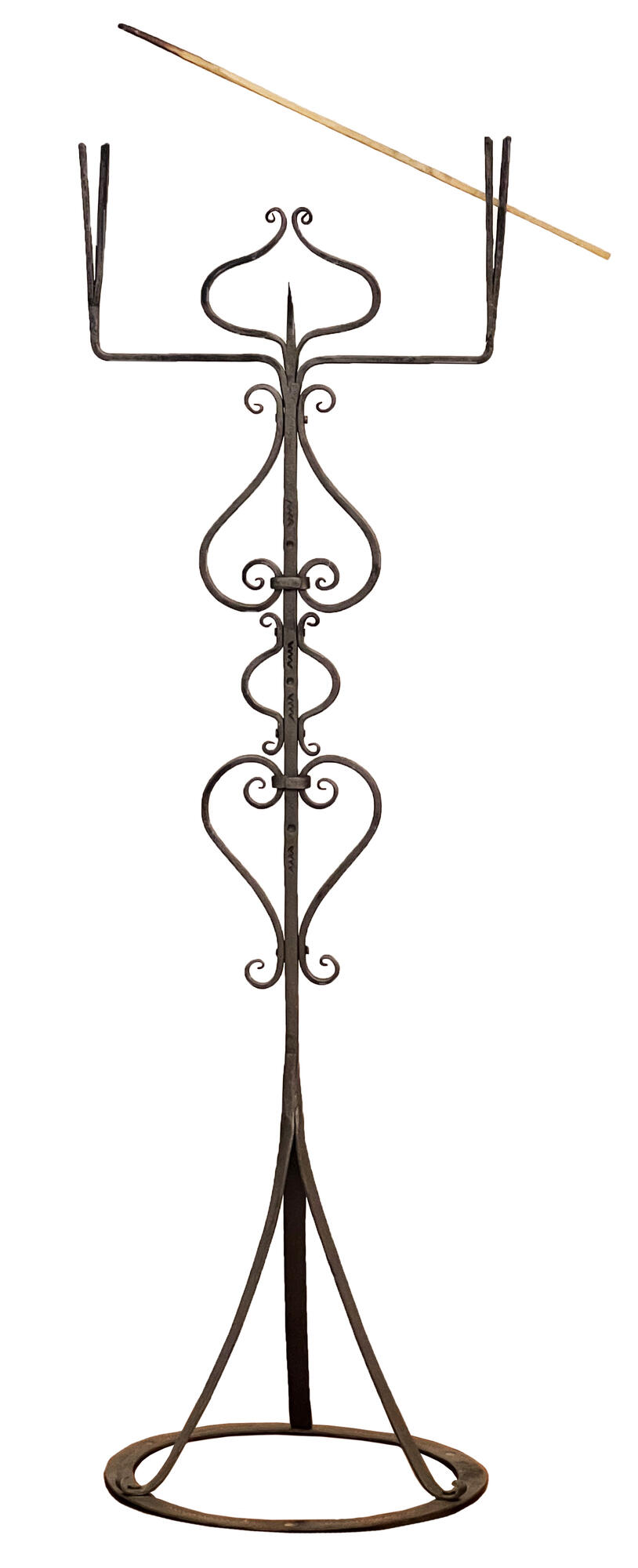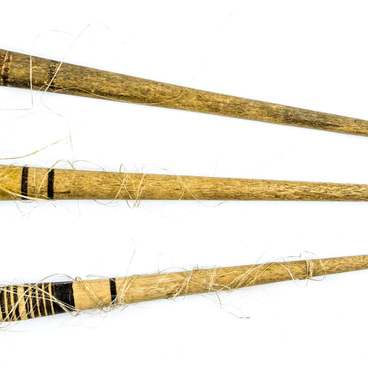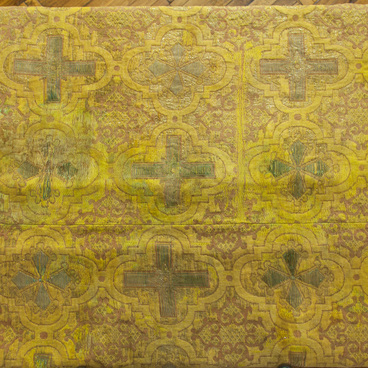Svetets is a setup for fixing burning splinter wood.
Splinter wood is a thin long chip of dry wood. Initially it was intended to light up the izba (peasant house). In order to get splinter woods, logs were split.
The logs had to be without knots. Firstly, the logs were dried out in the stove then they were split. The length of the splinter wood could be 1,5 m.
The splinter wood was fixed in the svetets. That is a special setup which had
a pointed under end. The end was hammered into the wall or wood support. In Russia people started using svettsy in the Xth century.
Small supports were put on the bench, high supports were put on the floor. That let carry a source of light into any part of the izba without difficulties.
Blacksmiths tried to show their imagination and mastery when manufacturing forged svettsy. A lot of attention was devoted to the part which splinter woods were inserted into. In Russian it is called navershie of svetets.
Not all the trees were suitable for splinter woods. For the most part, birch or pine was chosen. Birch splinter wood gave a steady, pure flame but it emitted smoke and threw down smoldering small pieces of coal. Pine logs were easier to split. Pine splinter wood blazed and the flame was wide. But it burnt down quicker and gave much soot. To add to this, a small piece of coal of the pine splinter wood twisted as a spiral and prevented from burning.
There was a tub with water or snow under the burning end of the splinter wood at the svettsa. The water reflected light and made the house lighter. Moreover, it prevented from fire which can be caused by falling smoldering small pieces of coal. Sometimes svetets was fixed on the special wood support with the integrated tub.
Generally, compact svettsy were preferable, because they were used only during cold season when daylight hours were fewer. During the rest of the year svetets was put under the bench or to the attic.
ornamental patterns. To get more light several splinter woods were burnt at the same time.
Svetets and the splinter wood were in use in the peasant households till the October Revolution in 1917.


